Resin keycaps have gained popularity among keyboard enthusiasts due to its beautiful appearance, amazing design, and all-around smooth and pleasant feel. However, some users claim that they are not very durable. Why so? In this article, let’s take a look a resin keycap, how people create them, and see if they are really durable enough.
We are going to explain everything you need to know about resin (artisan) keycaps in this article, including how they function, how to build them, why you should use them, and whether or not they’re lasting.
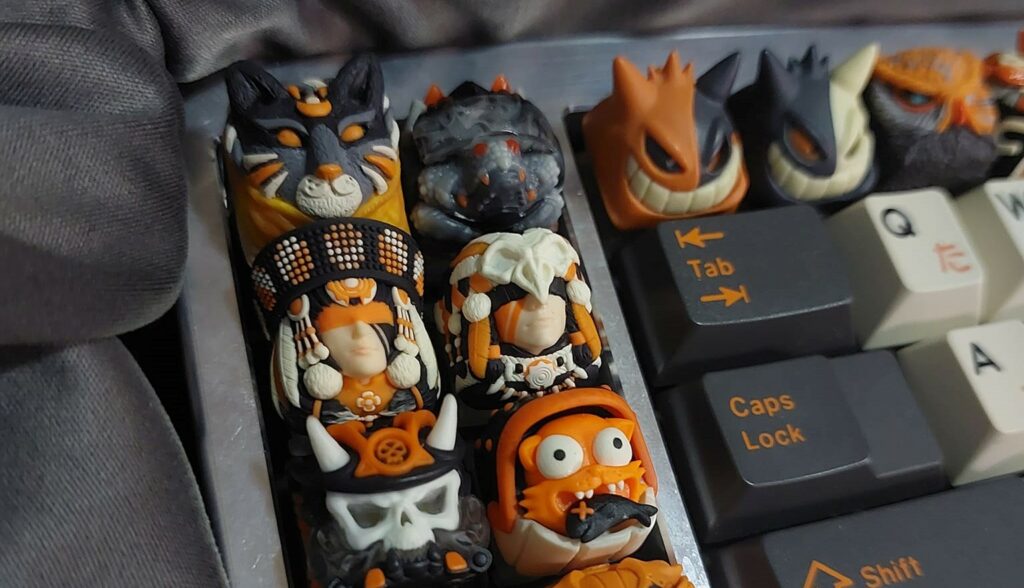
Resin Keycaps: What are they?
As everyone is familiar, resin is a thick liquid that can be either plant- or plastic-based and is used to create polymers. In general, one of the uses for resin is in keycaps. These are keycaps created by pouring curing resin into a keycap mold.
Years ago, resin keycaps weren’t all that popular. However, if we look at resin keycaps and artisan keycaps presently, we can see that they are widely available nearly everywhere keycaps and keyboard components are available.
The unexpected increase in popularity of resin keycaps can be attributed to their general stunning appeal as well as their DIY-friendliness and ability to be made from materials and color schemes of your own selection.
With all of these advantages, resin keycaps are the major competitor to PBT and ABS plastic, whose keycaps are widely available on the market.
The Process of Making Resin Keycaps
However, making resin keycaps isn’t the fastest task in the world. But, you can typically get really unique artisan resin keycaps online and at shops all around the world.
Below are the things you should know and a step-by-step tutorial for creating excellent, high-quality resin keycaps that you could put on your keyboard’s mechanical switches if you decide to make them yourself.
Step 1: Get Resources
As I often say, gathering the materials and tools you’ll need to complete the mission is the first process in any DIY project. You’ll actually need pretty a few things to complete this resin keycap fabrication project.
To protect yourself, you’ll need a mask, gloves, mica powder for some color, a variety of decorations, A and B epoxy resin, and a 3D mold for the keycap you are going to make. Once you have all of these items, you can proceed to the following stage of the procedure.
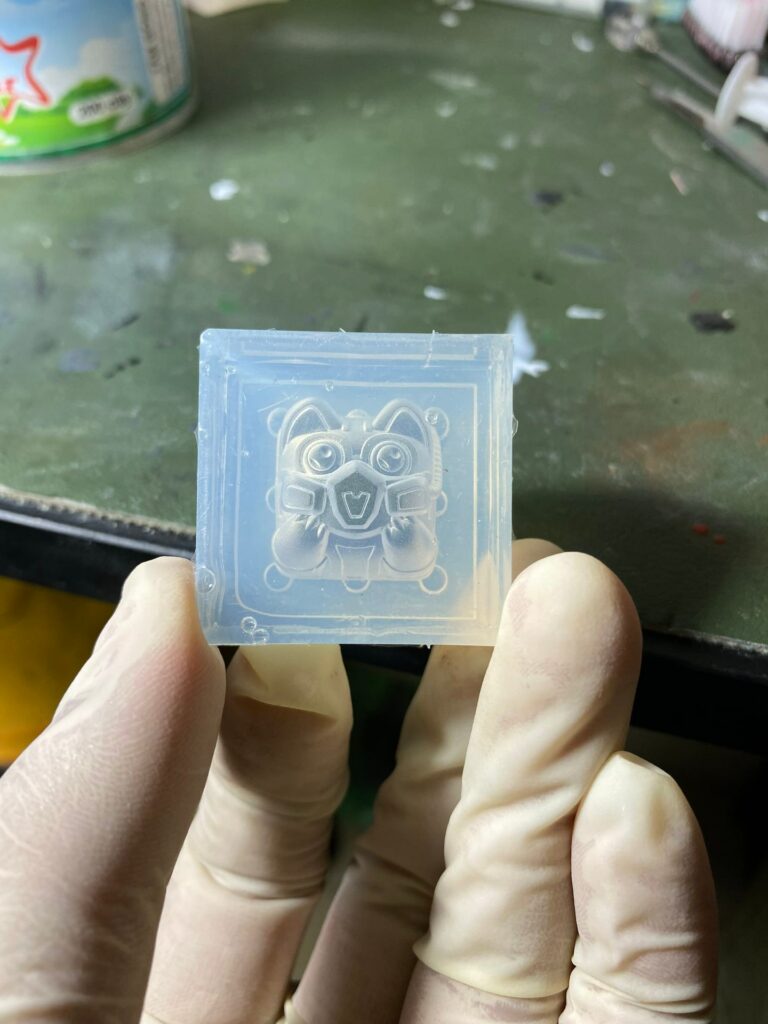
Step 2: Getting Resin Ready
Resin is an extremely delicate material that requires careful handling. We will therefore combine equal volumes of A and B epoxy for the keycap combination in a container and swirl slowly for around five minutes.
Following that, pour the mixture the resin into the mold, filling it all the way to the top. Remember to not under fill it, and you will be good. Otherwise, your keycap will not be able to fit on your keyboard switch, therefore you’ll also need to put the resin mixture to the mold for the switch stem.
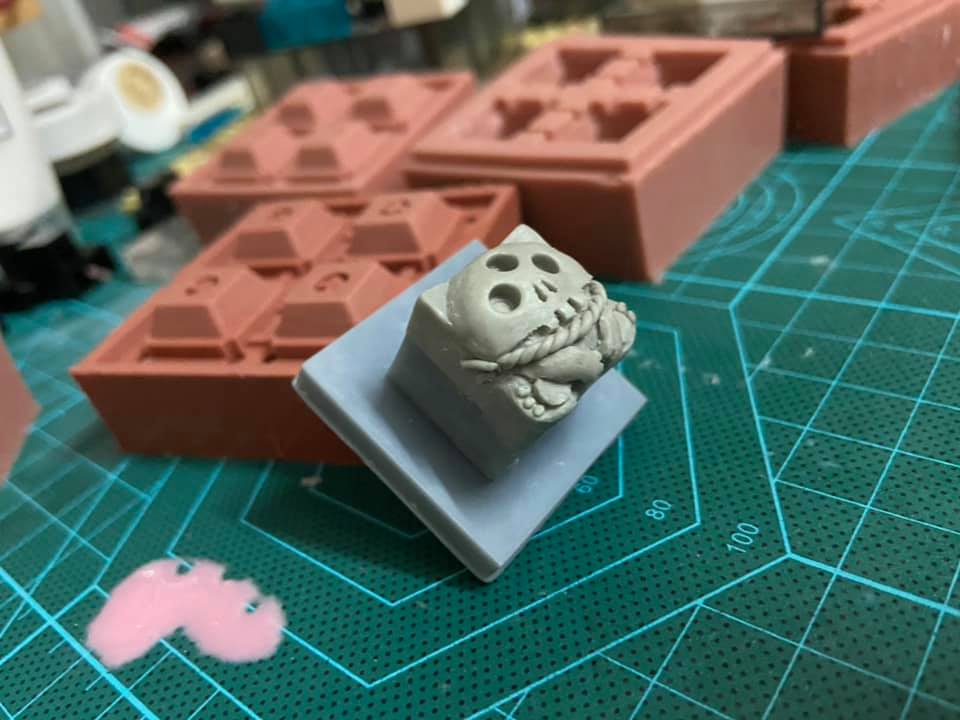
Step 3: Putting Your Own Creative Touch on It
The picture is now all yours. The rather plain-looking resin within the mold has to be decorated now. To make the resin keycaps a really fantastic natural color pattern feel, I would advise using the mica powder.
If you’re still not satisfied, you can add custom molds, stickers for decorations, or something similar to the mold along with the resin to give it a cool appearance. Even once they’re finished, you can opt to paint on the keycaps and create artwork. Basically, you can now proceed with this stage whichever you like.
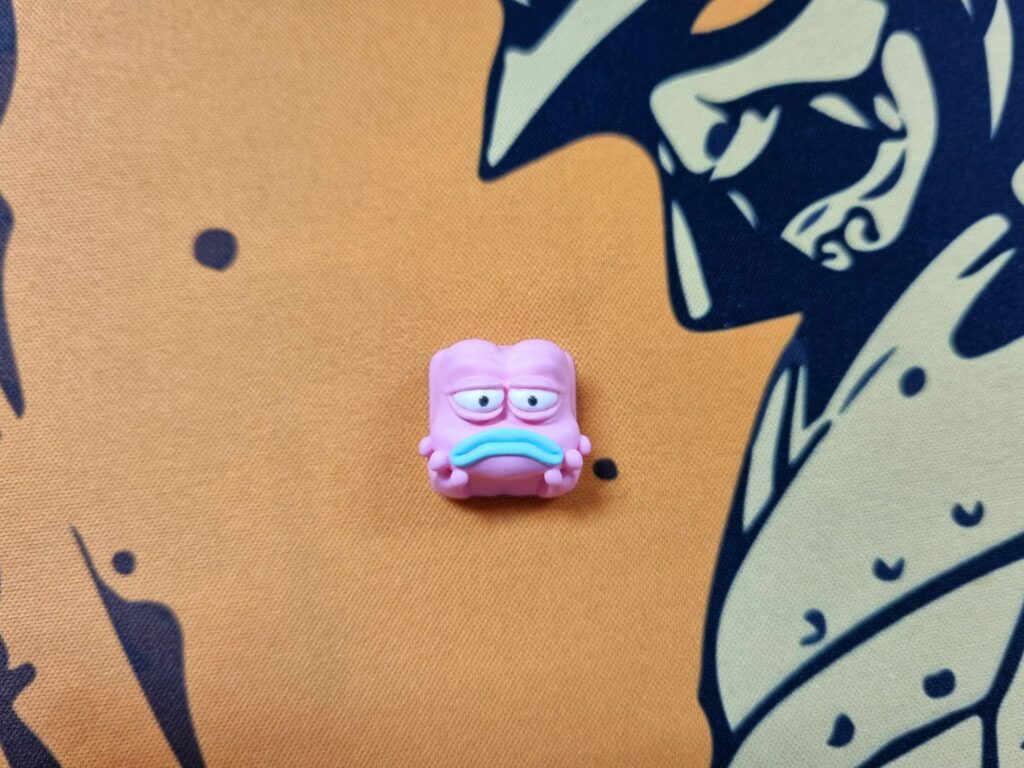
Step 4: Leaving the mold to dry
The most crucial phase of the procedure is about to begin. As we previously mentioned, the resin is a delicate product, therefore attention must be paid to the temperature, the volume of the combination, the curing time, and everything else. Thus, be careful to follow all necessary rules in this scenario.
As long as you maintain the mold stable for at least 1.5 days, storing in a neutral temperature condition between between 25 and 30 degrees would be sufficient. This will enable you to check that the keycaps are not still squishy or sticky and that the mold is robust. However, the kind of resin you’re using also matters.
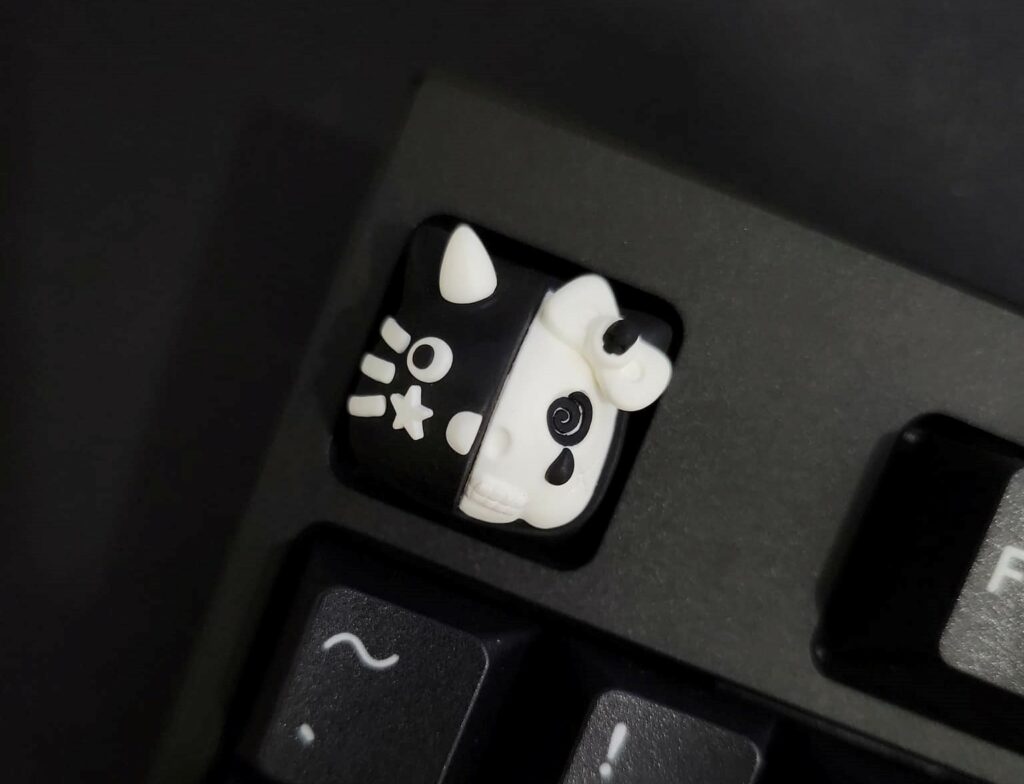
Step 5: Place Resin Keycaps On Your Keyboard
You’ll need to remove the keycaps from the mold and examine them after the preservation process is complete. You can check to see whether they fit on your keyboard switches if they are well-trimmed and formed.
You can use the keyboard as much as you like for work and gaming when all the keycaps have been attached to the switches. The way the switches feel and the smoothness they provide will undoubtedly win you over. But in the end, it’s all about the vibe.
The advantages of resin keycaps
Why use resin keycaps when high-quality PBT or ABS keycaps are available and ready to be put on your keyboards? Let’s look at some of the main advantages resin keycaps have over other keycaps.
Visual Aesthetics
Resin keycaps differ from conventional keycaps in that they have a distinct visual aesthetics component. They have craftsmanship if an artist designed them, and they make the best keycaps in my opinion because they make a better canvas for artistic designs than other keycap varieties.
DIY Project
PBT plastic keycaps and ABS keycaps are produced on an industrial scale in factories using several arduous techniques. However, the beautiful thing about resin keycaps is that they are simple to produce and may even be made at home.
Add your own patterns
Resin keycaps are a blank canvas for your imagination. You can utilize them plainly if you’re not very creative. But if you feel that way, you can add various colors, paints, patterns, stickers, and embellishments to your resin mold to make the keycaps more bright and beautiful than those made by artisans.
Cheap
The biggest feature, however, is resin keycaps’ low cost. Even if you make them at home, they don’t cost nearly as much as you may anticipate. Resin will be the only thing you have to spend money on. If you plan to decorate the resin keycaps yourself, you can purchase everything else for the cheapest price.
Do Resin Keycaps Last Long?
Despite all these advantages and many more, resin keycaps are frequently criticized for being weak and short-lived. So, are they actually resilient? Actually, the untrue assertions that resin keycaps aren’t at all durable are all frauds.
Comparing resin keycaps to other keycaps, you can say that they are fairly durable. They are expertly constructed and engineered for keyboard use, and if you want them to, they can last a long time. One aspect of resin keycaps’ strengths that has to be discussed separately is durability.
How Durable Are Resin Keycaps?
The keyboard lover community has frequently questioned me about how durable resin keycaps are and whether they are genuinely robust. Well, if you ask me, it’s fairly robust and resilient.
I’ll give you a number indicating how sturdy these keycaps are. PBT keycaps, which are extremely robust, score somewhere above 80 on the Shore Hardness Scale. A decent resin keycap, on the other hand, will score between 85 and 90. This demonstrates that resin keycaps are significantly more durable than PBT keycaps.
In terms of durability, resin keycaps can even last you several years if you use them carefully and maintain them clear and clean. They are therefore excellent in terms of durability.
If being physically abused is what you’re concerned about, resin keycaps will last more time than other keycaps. They are only incorrectly stated to be brittle or mushy because people improperly cure them or don’t know which epoxy resin to use or what procedures to follow. But all of it is now known to you.
Conclusion
One of the strongest keycaps now available on the market is resin. Keycaps made of artisanal resin can cost more than $50, but if you make them yourself, they won’t cost much.
I really hope you took a lot away from this tutorial and had a great experience crafting your own resin keycaps. Having fun while typing is important!
